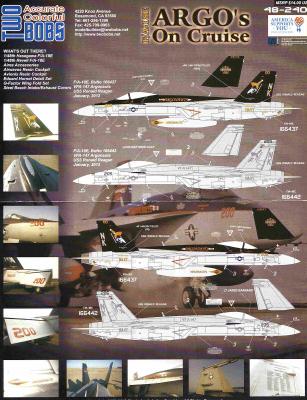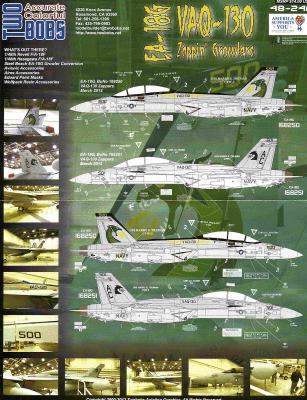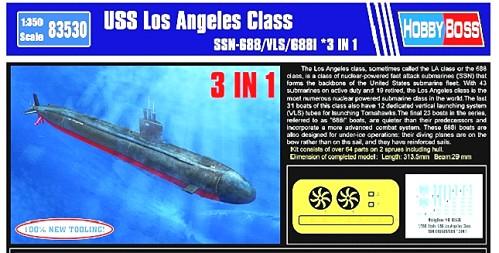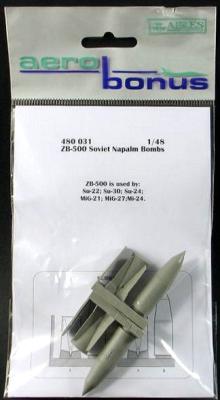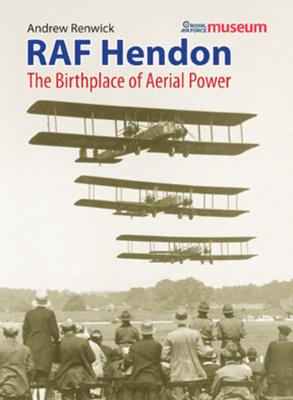The newest release from Bob Sanchez and Twobobs is a set for the VFA-147 Argonauts aboard the USS Ronald Reagan. The Argonauts are based at NAS Lemoore and transitioned into their current planes, the F-18E Hornet, in 2008. The set is designed for either the Hasegawa or Revell F-18E single-seat Hornet and represent the planes on their 2012 cruise.
Welcome to the IPMS/USA Reviews site!
Introduction: The primary organization of the IPMS/USA Review website is by IPMS/USA National Contest Class. Within each Class there are sub-menus by kits, decals, books, etc. The Miscellaneous Class is for items that are not class specific or that cross two or more classes.
IPMS/USA Members: We encourage you to submit reviews, both here and to the Journal. To volunteer for membership in the IPMS/USA "Reviewers Corps" and submit your own reviews, please read the Guidelines For Submitting Product Reviews.
Manufacturers, publishers, and other industry members: IPMS/USA is pleased to offer your company the opportunity for product reviews. All product reviews are performed by IPMS/USA members, and are posted in the publicly-accessible section of our website. With very few exceptions, we perform full build reviews of new kit releases, aftermarket products, and supplies. If you would care to provide product samples for review, please contact John Noack, IPMS/USA 1st VP.
To learn more about IPMS/USA, please see our About Us page.
Bob Sanchez and Twobobs continue their excellent new releases with a set for the EA-18 Growler. This set covers Electronic Attack Squadron 130 (VAQ-130), also known as the "Zappers" and based at Naval Air Station Whidbey Island. Currently part of Carrier Air Wing 3, the Zappers deploy aboard the USS Harry S. Truman (CVN-75). VAQ-130 is the oldest electronic warfare squadron in the U.S. Navy.
This set covers two planes, the CAG plane with black tail and spine with a green dragon breathing lightning bolts, and a line plane in all gray with the same markings. This kits listed are for Revell and Hasegawa F-18F with the Steel Beach conversions. I would suggest that the Hasegawa Growler release may be your best choice and it was reviewed here: http://web.ipmsusa3.org/content/ea-18g-growler.
The Los Angeles-class is a class of nuclear-powered fast attack submarines that forms the backbone of the United States submarine fleet. With 42 submarines on active duty and 20 retired, the Los Angeles class is the most numerous nuclear-powered submarine class in the world.
For decades, modelers here in the West were left with little choices when it came to modeling Soviet and Eastern Bloc aircraft. What was available was slim and, at best, based on grainy pictures and third-party drawings. However, as history unfolded, more became available after the fall of the Berlin Wall, and Eastern Bloc nations became part of the information exchange. More accurate kits were produced – but, alas, not much in the way of ordnance.
Within the last few years, there has been a keen interest in providing accurate and highly detailed weapons loads to match the highly detailed models now on the market. The accessibility of solid reference material, coupled with advances in resin molding technology, has created a perfect environment for a host of new aftermarket items to hit the shelves.
Having spent some pleasurable visits to both the RAF Hendon and RAF Cosford museums, my curiosity was piqued by the title of this book and I was anxious to review it. When I received it and saw “Royal Air Force Museum” on the soft cover as the official “sponsor,” I anticipated coverage of the first, if not both museums.
Nope. In fact, the author states in the second paragraph of his introduction that there’s not enough space in the publication to cover the museum in depth---instead, the book is a concise history of RAF Hendon’s founding, rise, and utilization.











